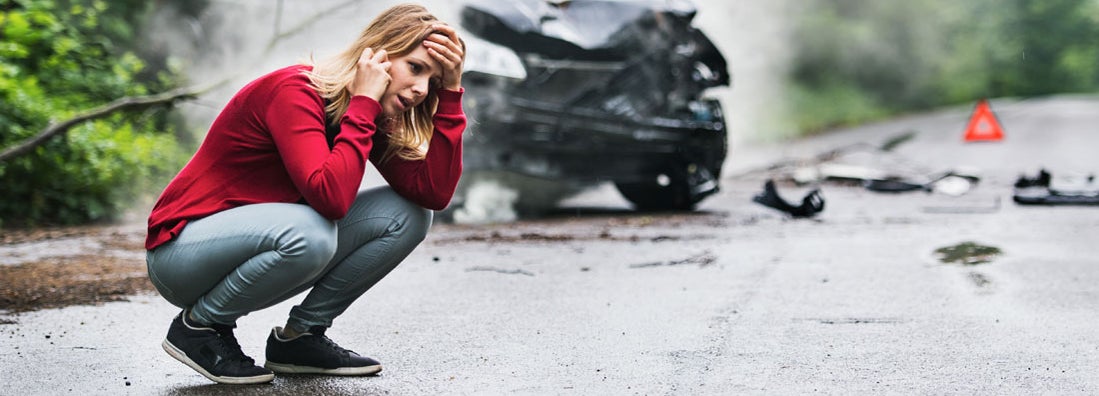Who's Responsible if You Get into a Car Accident and the Other Driver Takes Off?

Paul Martin is the Director of Education and Development for Myron Steves, one of the largest, most respected insurance wholesalers in the southern U.S.

As a responsible driver, you take every precaution necessary to protect not only yourself and your vehicle, but also other drivers on the road. Unfortunately, not everyone else is this courteous. So what happens when you’re involved in a hit-and-run car accident where the other driver takes off afterward? Who’s responsible for this mess, anyway?
Fortunately, independent insurance agents can not only help you answer this question but also get protected against the damages. They’ve had loads of experience with handling every kind of claim under the sun, so they know exactly what kind of coverage you’d need in this scenario. Better yet, they’ll help you get all the protection you need, long before you ever need to file a claim. Here’s how they’d get you covered against being the victim of a hit-and-run accident.
Who’s Responsible if You’re Involved in a Car Accident and the Other Driver Takes Off?
Well, the answer to this can be a little complicated. Really, it depends on your specific state’s laws detailing fault for hit-and-run incidents. However, since the other driver bolted from the scene, you would, unfortunately, be the one left to clean up the mess on your end. This would mean filing a claim through your own insurance and handling the repairs to your vehicle. Sadly, in this case, you probably won’t ever hear from the other driver again.
If It’s All On You, Which Insurance Would Help?
Since you’d be the one left to deal with the damage to your vehicle and your injuries, you’d need to file a claim under uninsured motorist insurance. This coverage is an add-on to standard auto insurance policies, but it’s really important to get to avoid being without protection for a tragic scenario like a hit-and-run.
Uninsured motorist coverage has three main types:
- Uninsured motorist insurance: AKA uninsured motorist bodily injury insurance, this coverage reimburses drivers and their passengers for medical bills and lost wages when the other driver is at fault and lacks auto insurance. Coverage also protects pedestrians from hit-and-run accidents.
- Uninsured motorist property damage coverage: Covers physical damage to your vehicle as well as other personal property like a house or mailbox when the other driver is at fault and uninsured, or flees from the scene.
- Underinsured motorist protection: Coverage kicks in when the at-fault driver does not have adequate insurance to cover your damages.
The type of uninsured motorist coverage required in your state may vary, so it’s important to work with your independent insurance agent to get equipped with exactly what you need before you’re ever involved in such an incident.
Do I Have to Call the Police?
Yes, it’s actually a requirement to contact authorities after a hit-and-run accident before you can file a claim through uninsured motorist insurance. Be sure to call the police ASAP following the accident, preferably while you’re still on the scene so all the details are fresh in your mind. Don’t miss this important step of the process, because you’ll likely end up being denied coverage by your insurance company if you do.
Does My State Have Minimum Insurance Laws?
Yes, and this is true of every state. Every state requires property damage liability insurance, and every state (with the exception of Florida) requires bodily injury liability coverage. Apart from this, your independent insurance agent can easily tell you what your specific state’s minimum auto insurance requirements are. Also, depending on where you live, you may actually be required to have uninsured motorist coverage already.
What if I Don’t Have Insurance?
Despite state regulations for auto insurance, it’s estimated that an average of one in eight drivers across the US don’t have coverage. In certain states the problem is actually much worse, bringing the percentage of uninsured drivers up to one in five. That being said, if you didn’t have your own coverage, you’d be out of luck in this situation. Without auto insurance, you’d have to pay for your medical bills and any repairs to your vehicle out of your own pocket.
How Do You File a Car Insurance Claim?
While hopefully, you’ll never be the victim of a hit-and-run accident, fortunately, the process of filing an auto insurance claim is actually pretty simple. Becoming familiar with how to file a claim in advance can save you time and stress in the event of an incident down the line.
Take the following steps to file an auto insurance claim:
- Contact your independent insurance agent ASAP: And we do mean ASAP. After you call the police, you might even want to call your independent insurance agent right from the scene of the accident. The fresher the details of the incident are in your mind, the better.
- File the claim through the insurance company: Either through the carrier’s website, a mobile app, or by calling/faxing/emailing them. Provide photos of any vehicle damage and schedule an appraisal. You can also request reimbursements for towing or rental car services if necessary.
- Provide the necessary documents: Normally this involves filling out a proof of claim form and a copy of the police report. Your insurance company may ask you for more, depending on their specific claims process.
- Stay in touch with your agent: Your independent insurance agent will keep you updated on the status of your claim, and tell you the timeframe in which specific parts of the process should be handled. They’ll also be able to predict when the claim will be fully resolved, and when you’ll get your reimbursement.
Your insurance company most likely will let you monitor your claim’s status through their website or mobile app. After filing a claim, keep yourself updated on its status and stay in touch with your independent insurance agent to help streamline the process.
How Would This Incident Affect My Premium?
Though this accident wasn’t even your fault, sadly you might still get hit again, with an increased car insurance premium. Some insurance companies raise their premiums by up to 10% or even more following a single accident, regardless of who’s at fault. However, a few states don’t allow insurance companies to raise premium rates if you weren’t at fault. Your independent insurance agent can help you find the exact answer based on your specific policy and location.
Other Common Auto Risks Worth Considering Coverage For
Though hit-and-runs are a legitimate concern for drivers across the map, there are many other potential risks that all drivers should consider having coverage for. To help determine which coverages you need, take a look at a few of the most common auto insurance claims:
- Damaged windshields: Windshields can be damaged or destroyed easily, and in many different ways. You’d need comprehensive coverage to reimburse you for repairs to or replacement of your windshield.
- Hail damage: Hail can seriously damage or even total vehicles. If you live in an area prone to hailstorms, you’ll want to have comprehensive auto insurance to protect you.
- Vandalism: Cars can be keyed, tagged, get broken into, or get their tires slashed. Once again, the damage would be covered under comprehensive auto insurance.
- Theft: Your car doesn’t have to be left unattended in some sketchy parking lot to be swiped. Comprehensive auto insurance reimburses the vehicle’s owner for the replacement value of the car if it’s stolen.
- Rear-end collisions: By far the most common car insurance claims are from rear-end collisions. Since you’re not at fault if you get rear-ended, the collision insurance section of your auto policy would reimburse you for any vehicle damage.
Work with your independent insurance agent to address all your areas of concern about protecting yourself and your vehicle on and off the road. They’ll make sure you get set up with all the auto insurance coverage you could ever need.
Here’s How an Independent Insurance Agent Would Help
When it comes to protecting drivers against hit-and-run accidents and all other stressful incidents, no one’s better equipped to help than an independent insurance agent. Independent insurance agents search through multiple carriers to find providers who specialize in auto insurance, deliver quotes from a number of different sources and help you walk through them all to find the best blend of coverage and cost.
iii.org
